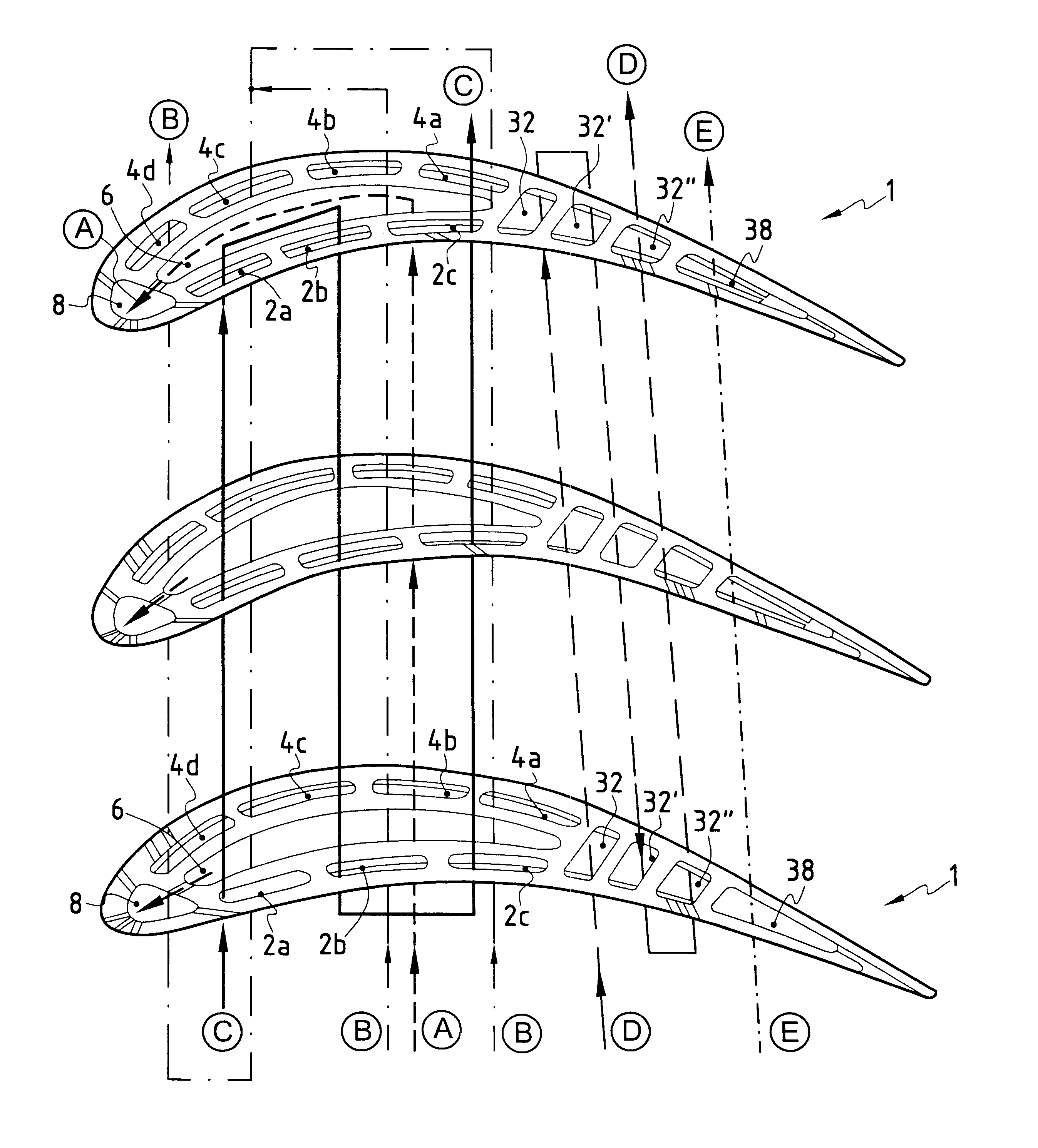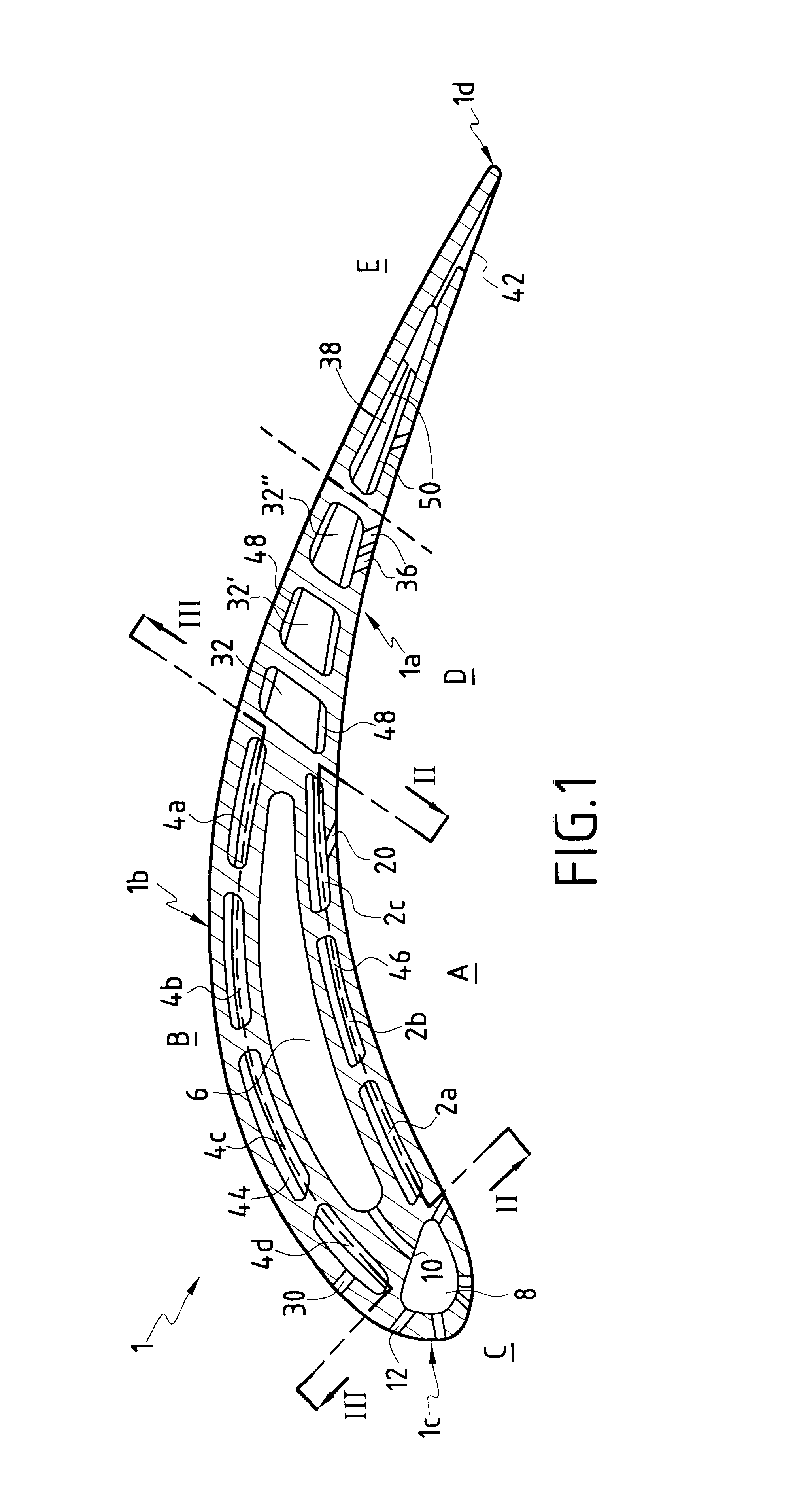Gas turbine blade cooling circuits
a technology of cooling circuit and gas turbine blade, which is applied in the direction of machines/engines, mechanical equipment, liquid fuel engines, etc., can solve the problems of achieve the effects of reducing the drawbacks, reducing the temperature of the leading edge, and increasing the lifetime of such blades
- Summary
- Abstract
- Description
- Claims
- Application Information
AI Technical Summary
Benefits of technology
Problems solved by technology
Method used
Image
Examples
Embodiment Construction
With reference to FIG. 1, it can be seen that the blade 1 of a gas turbine of an airplane engine constituting an embodiment of the invention comprises, in its central portion, first and second cooling circuits A and B respectively that are independent from each other. The first circuit A comprises at least one cavity on the concave side and preferably a plurality of cavities, for example three concave side cavities 2a, 2b, and 2c extending radially beside the concave face 1a of the blade 1. The second cooling circuit B comprises at least one convex side cavity, and preferably a plurality, for example four convex side cavities 4a to 4d, extending radially beside the convex face 1b of the blade.
These circuits serve to cool respectively the concave face and the convex face of the blade 1 in a mode of operation that is described in greater detail below.
As shown more precisely in FIG. 2, at least one air admission opening 14 is provided at a radial end of a concave side cavity 2a beside ...
PUM
 Login to View More
Login to View More Abstract
Description
Claims
Application Information
 Login to View More
Login to View More - R&D
- Intellectual Property
- Life Sciences
- Materials
- Tech Scout
- Unparalleled Data Quality
- Higher Quality Content
- 60% Fewer Hallucinations
Browse by: Latest US Patents, China's latest patents, Technical Efficacy Thesaurus, Application Domain, Technology Topic, Popular Technical Reports.
© 2025 PatSnap. All rights reserved.Legal|Privacy policy|Modern Slavery Act Transparency Statement|Sitemap|About US| Contact US: help@patsnap.com



